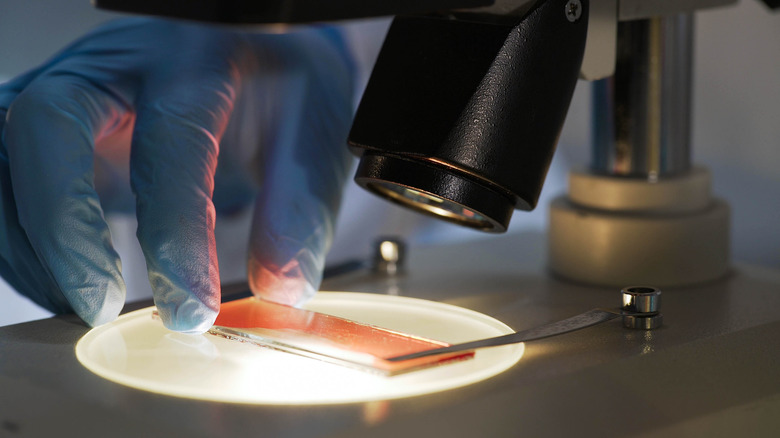Important Buffers In Living Systems
A buffer is a chemical substance that helps maintain a relatively constant pH in a solution, even in the face of addition of acids or bases. Buffering is important in living systems as a means of maintaining a fairly constant internal environment, also known as homeostasis. Small molecules such as bicarbonate and phosphate provide buffering capacity as do other substances, such as hemoglobin and other proteins.
Bicarbonate Buffer
Bicarbonate Buffer
The maintenance of blood pH is regulated via the bicarbonate buffer. This system consists of carbonic acid and bicarbonate ions. When the blood pH drops into the acidic range, this buffer acts to form carbon dioxide gas. The lungs expel this gas out of the body during the process of respiration. During alkaline conditions, this buffer brings pH back to neutral by causing excretion of the bicarbonate ions through the urine.
Phosphate Buffer
Phosphate Buffer
The phosphate buffer system acts in a manner similar to the bicarbonate buffer, but has much stronger action. The internal environment of all cells contains this buffer comprising hydrogen phosphate ions and dihydrogen phosphate ions. Under conditions when excess hydrogen enters the cell, it reacts with the hydrogen phosphate ions, which accepts them. Under alkaline conditions, the dihydrogen phosphate ions accept the excess hydroxide ions that enter the cell.
Protein Buffer
Protein Buffer
Proteins consist of amino acids held together by peptide bonds. The amino acids possess an amino group and a carboxylic acid group. At physiological pH, the carboxylic acid exists as the carboxylate ion (COO-) with a negative charge and the amino group exists as the NH3+ ion. When the pH becomes acidic, the carboxyl group takes up excess hydrogen ions to return back to the carboxylic acid form. If the blood pH becomes alkaline, there is a release of a proton from the NH3+ ion, which takes the NH2 form.
Hemoglobin Buffer
Hemoglobin Buffer
The respiratory pigment present in blood, hemoglobin, also has buffering action within tissues. It has an ability to bind with either protons or oxygen at a given point of time. Binding of one releases the other. In hemoglobin, the binding of protons occurs in the globin portion whereas oxygen binding occurs at the iron of the heme portion. At the time of exercise, protons are generated in excess. Hemoglobin helps in the buffering action by binding these protons, and simultaneously releasing molecular oxygen.
Cite This Article
MLA
Stewart, David. "Important Buffers In Living Systems" sciencing.com, https://www.sciencing.com/important-buffers-living-systems-8659835/. 29 April 2018.
APA
Stewart, David. (2018, April 29). Important Buffers In Living Systems. sciencing.com. Retrieved from https://www.sciencing.com/important-buffers-living-systems-8659835/
Chicago
Stewart, David. Important Buffers In Living Systems last modified August 30, 2022. https://www.sciencing.com/important-buffers-living-systems-8659835/
